A superb Charles II month duration floral marquetry longcase clock by the well-known maker John Wise, c. 1680-85. Measure: 10″
Request Price Information
Follow Us
A superb Charles II month duration floral marquetry longcase clock by the well-known maker John Wise, c. 1680-85. Measure: 10″.
The case is of the highest quality and decorated throughout in very attractive floral marquetry depicting spring flowers and birds showing a high level of sophistication with a glazed circular lenticle to the door. Similarly, the rising hood is decorated with blind frets around the top and surmounted by a shallow caddy decorated by five gilt wooden ball finials. It is flanked by prominent gilt brass-capped solid barley twist columns, with blind fretted panels to the sides.
The month-going nicely finned and knopped five pillar movement has reversed going and striking trains, the striking train (on the right) being regulated by a small outside countwheel. The going train has anchor escapement and a seconds pendulum. The movement is fronted by a 10-inch brass dial with an unusual narrow silvered chapter ring, seconds ring and date aperture. It has elaborate cherub-head spandrels in the corners and is signed along the bottom John Wise Londini Fecit. The middle is finely matted, whilst the time is indicated by a fine pair of blued-steel hands, the hour hand richly pierced.
The maker
John Wise was born in Banbury shortly before 17 March 1624, the date of his baptism. He was the son of John and Ann Wise and a cousin of Joseph Knibb. He was apprenticed to Peter Closon, the famous lantern clockmaker, through Thomas Dawson and the Clockmakers’ Company in 1638 and was freed in 1646. Initially, he worked in Warwick, where he repaired the clocks of St Nicholas’ and St Mary’s church from 1653-1668. His first four sons were baptised in St Mary’s. After 1670 he worked in London, at one time ‘near the Popeshead in Moorfields’. He took quite a number of apprentices over the years, including his sons Richard, John, Thomas, Joseph, Peter, Luke, and Robert. He was buried in St Andrew’s Holborn in 1690. His son John may have followed in his footsteps from 1690 until 1720. Lantern clocks, longcase clocks and spring clocks by his hand are known.
Condition
Good.
Dimensions
Height: 211 cm (83.08 in)
Width: 45 cm (17.72 in)
Depth: 24.5 cm (9.65 in)
PREVIOUSLY SOLD
No Results Found
The page you requested could not be found. Try refining your search, or use the navigation above to locate the post.
No Results Found
The page you requested could not be found. Try refining your search, or use the navigation above to locate the post.
YOU MAY ALSO LIKE
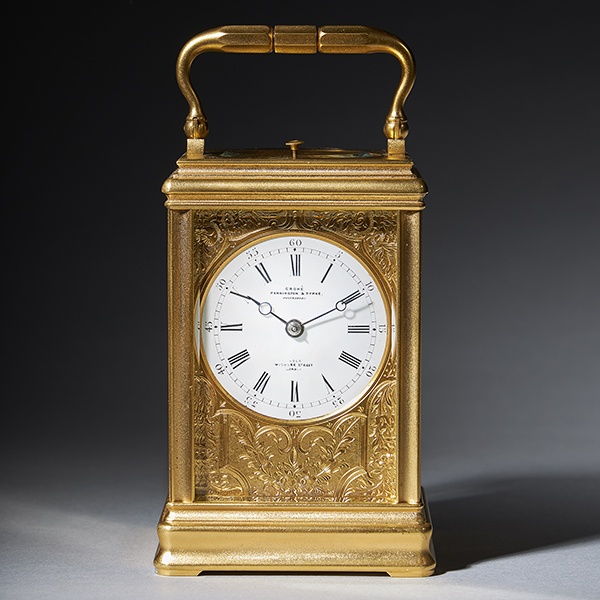
19th Century Repeating Gilt-Brass Carriage Clock by the Famous Drocourt
19th Century Repeating Gilt-Brass Carriage Clock by the Famous Drocourt £5,600 Follow Us19th Century Repeating Gilt-Brass Carriage Clock by the Famous Drocourt A superb repeating carriage clock with a gilt-brass gorge case by the famous maker...
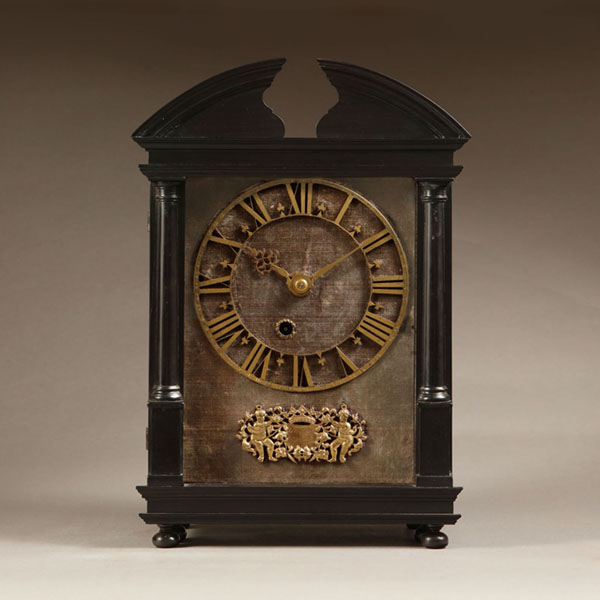
17th-Century Hague Clock Signed by Pieter Visbagh, circa 1675
Small 17th Century Hague clock made c. 1675 by Pieter Visbagh, who was apprenticed by Salomon Coster. The latter made the first pendulum clock according to the instructions of Christiaan Huygens, the internationally renowned scientist who developed the idea of applying a pendulum to a clock movement.
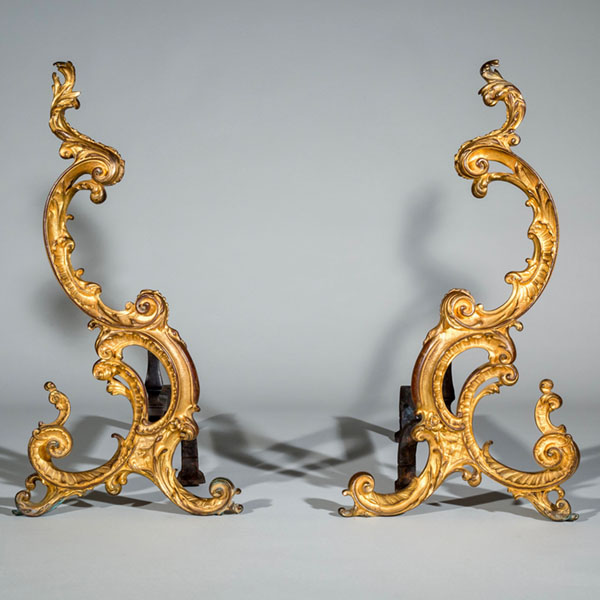
Pair of 18th-Century English Rococo Gilt Bronze Andirons or Firedogs
An exceptional pair of 18th century English Rococo gilt bronze andirons or fire dogs.
The bold shape of these andirons relate to designs of Thomas Johnson (1714–1778), one of London’s pioneers of the ‘Modern’ or French style, later known as Rococo.
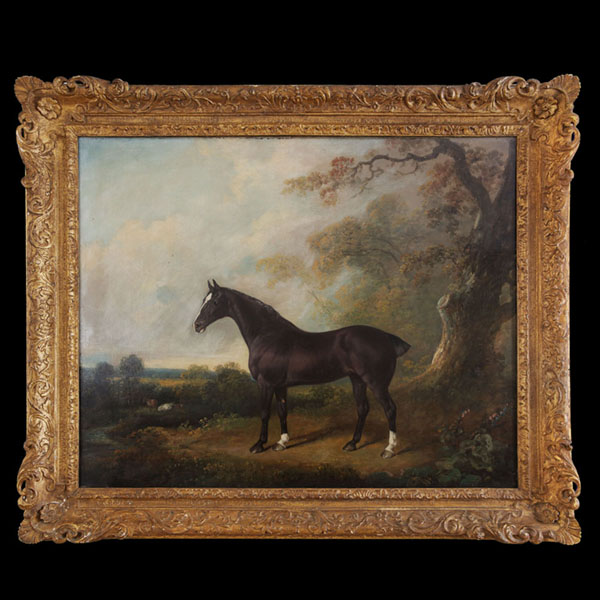
Oil Painting of a Horse Standing Proud in Woodland
Fine Art – Charles Henry Scwanfelder (1774-1837). Signed C H Schwanfelder Pinx and dated 1825. An exceptional portrait of a horse standing proud in woodland, in front of a tree-lined vista incorporating cows residing by a stream.
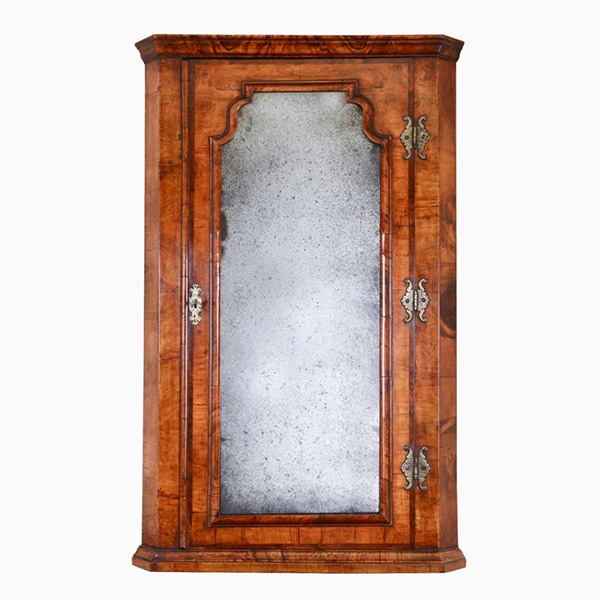
Queen Anne Walnut Corner Cupboard with Bevelled Mirror Plate
A truly remarkable find in original condition. To the door a shaped soft bevelled mirror plate is framed by a cross-grain molding of typical queen Anne design which is further cross-banded, feather-banded and edged to the opening with a single de-molding.

19th Century Repeating Gilt-Brass Carriage Clock by the Famous Drocourt
19th Century Repeating Gilt-Brass Carriage Clock by the Famous Drocourt £5,600 Follow Us19th Century Repeating Gilt-Brass Carriage Clock by the Famous Drocourt A superb repeating carriage clock with a gilt-brass gorge case by the famous maker...

17th-Century Hague Clock Signed by Pieter Visbagh, circa 1675
Small 17th Century Hague clock made c. 1675 by Pieter Visbagh, who was apprenticed by Salomon Coster. The latter made the first pendulum clock according to the instructions of Christiaan Huygens, the internationally renowned scientist who developed the idea of applying a pendulum to a clock movement.

Pair of 18th-Century English Rococo Gilt Bronze Andirons or Firedogs
An exceptional pair of 18th century English Rococo gilt bronze andirons or fire dogs.
The bold shape of these andirons relate to designs of Thomas Johnson (1714–1778), one of London’s pioneers of the ‘Modern’ or French style, later known as Rococo.

Oil Painting of a Horse Standing Proud in Woodland
Fine Art – Charles Henry Scwanfelder (1774-1837). Signed C H Schwanfelder Pinx and dated 1825. An exceptional portrait of a horse standing proud in woodland, in front of a tree-lined vista incorporating cows residing by a stream.

Queen Anne Walnut Corner Cupboard with Bevelled Mirror Plate
A truly remarkable find in original condition. To the door a shaped soft bevelled mirror plate is framed by a cross-grain molding of typical queen Anne design which is further cross-banded, feather-banded and edged to the opening with a single de-molding.




















